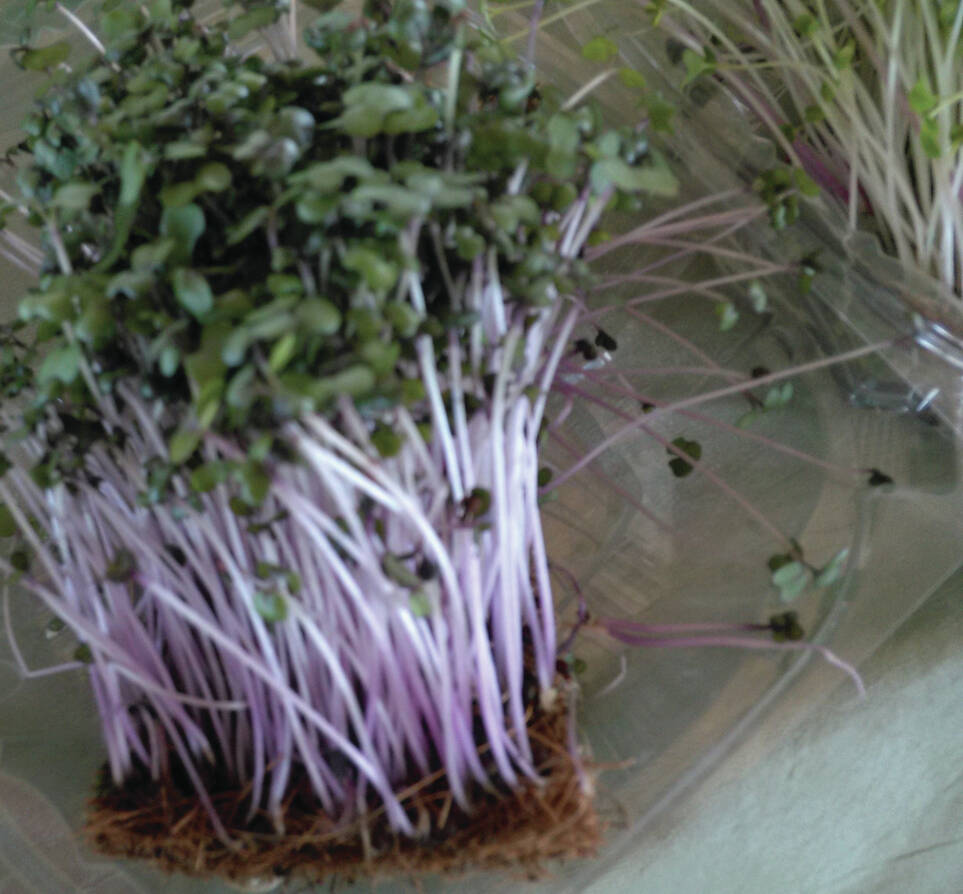 Microgreens are the young plants of some vegetables or herbs. Research shows that these small plants pack very high amounts of nutrition and beneficial compounds, including those that fight diseases. Microgreens can be grown in soil, on coco fiber, on clay medium, or hydroponically. They can be added to teas and various dishes. (Courtesy photo)
Microgreens are the young plants of some vegetables or herbs. Research shows that these small plants pack very high amounts of nutrition and beneficial compounds, including those that fight diseases. Microgreens can be grown in soil, on coco fiber, on clay medium, or hydroponically. They can be added to teas and various dishes. (Courtesy photo)Microgreens are small vegetable or herb plants that are usually harvested 7 to 14 days after seed germination. They have become popular in the American diet, especially as a health food, over the last 15 years as a great way to add nutrition to dishes.
Recent research has provided some rather amazing information about the power of the nutrients held in microgreens.
Most microgreens are 4 to 7 times more nutritious than the adult version of the same plant. Some microgreens, however, offer real surprises. Dr. Gene Lester, Plant Physiologist with USDA, led a team of scientists in 2012 who analyzed the key nutrients in a variety of microgreens, including broccoli. This team discovered that broccoli, by weight, held 40 times more nutrition than a mature head of broccoli.
Broccoli microgreens are high in vitamins A, several B vitamins, Vitamin C and Vitamin E, along with minerals of iron, calcium, phosphorus, magnesium, and zinc. Broccoli microgreens also have high levels of sulforaphane, an anti-cancer compound. New research, from several studies, shows great promise using microgreens against a variety of cancers. Thus far, studies show broccoli, kale, kohlrabi, (and others in the cabbage family), along with chickpea microgreens, rutabaga microgreens, flax, and buckwheat to be effective against cancer.
Broccoli and kohlrabi microgreens are a great way to introduce nutritious vegetables to children. They have a mild flavor, compared to the adult plants, and their small size makes them easy for children to pick up and add to the top of their soup or pizza.
Microgreens are best served fresh in salads, topping soup, in sandwiches and wraps, in omelets, tacos, or used in cold pressed juices. High heat will destroy some beneficial compounds, so keep the time to 3 to 4 minutes if you want to use them in a stir fry. The mild flavors of broccoli, kale, kohlrabi, (all members of the cabbage family) and basil microgreens also pair well as additions to teas, especially chamomile.
If you want to grow your own, microgreens can be grown in soil, on clay, on coconut fiber or hydroponically. Each plant has its own demands, but several are easy to start with and make a great project with children. There are about 80 different plants that are currently available as microgreen seeds. Seeds, along with growing information is available online from True Leaf Market, Johnny’s Select Seed and High Mowing Organic Seeds.
If you would like to purchase fresh microgreens for your health journey, they are available from 9 a.m. to noon today, and every Saturday, at the Farmers Market at McAllen’s Firemen’s Park, at 201 N. 1st St. This is a traditional farmers market with locally grown vegetables, fruits, mushrooms, and herbs, grass-fed meats and poultry, eggs, artisan baked goods and candies, along with herbal teas, plants, and natural skin care products.
Barbara Storz is a local horticulturist who writes about plants that grow well in South Texas. You can follow her on Facebook.
The post Powerful nutrition found in microgreens appeared first on MyRGV.com.
 (2).png)
 1 week ago
56
1 week ago
56








 English (US)
English (US)